Driving around Southern California may not seem like much of a Holiday, especially when traveling alone, but a recent weekend outmatched all my expectations. The plan was to make four different stops in hopes of collecting fencing history. All four planned stops were made, history was collected, old friends were visited and lobster toast was experienced on Highway 1 in Malibu. Really, it could not have gone better.
I’ll begin at the beginning. After a Facebook back and forth, I had a nice phone call with Jo Redmon, the retired long-time coach at Cal State Long Beach who, among other things, told me she had left some collegiate fencing records in SoCal upon her retirement to Arizona. They’d been left with Eric Holmgren at Gryphon Fencing in Placentia. Easy enough to track down and sure thing, Eric said there were several boxes, no one was doing anything with them and if I thought I could make heads or tails of them, I was welcome. The only catch was they were too heavy to ship in any reasonable fashion, so I’d need to come down and pick them up. Now, I live in NorCal today, but I grew up and spent a good part of my animation career working in SoCal, so a trip south is nothing terribly out of the ordinary. Although I usually take such excursions with my family and include stops at Disneyland and the homes of friends spread out all over the Inland Empire. Still, something to put on the docket for the new year.
Then I had another phone call that changed the pace. A month or so back, I got a mailing address from Buzz Hurst for one Muriel (Caulkins) (Bower) Taitt. Earlier in the year I’d been trying to help Vinnie Bradford with some references for a talk she was presenting at a TEDx event. (You can see it here.) Vinnie had been trying to get Muriel by phone with no luck. I figured since I had Muriel’s mailing address, I’d send a message that way and see if I had any luck. I typed up a nice letter, enclosed my Archive’s tri-fold flyer with a business card and off it went via USPS. If you don’t know (and I’ll use the name more recognizable to the fencing community) who Muriel Bower is, she is the retired former coach of Cal State Northridge and she is 98 years old. Less than a week after sending my letter, my phone rings and it’s Muriel. She’s a little hard of hearing (ninety eight) but she’s sharp as can be. We talked about my Archive and that I’d like to come interview her if she was amenable. She invited me to come down whenever I could and she’d be happy to talk. And, she said, “I’ve got a scrapbook.”
You may or may not have gleaned this from reading my posts on this website (assuming you’ve been here before) but the word “scrapbook” is one that pushes up my heart rate into the “Warning!” range. It’s possible such a reaction stems from the initial material that helped me formulate the idea for creating the Archive, namely Charlie Selberg’s scrapbooks. Still, every scrapbook is different in form and content. Some are easy to copy, some are impossible, some are in great shape and some are falling apart. But “scrapbook” still means one important thing: additions to the historic record, if I can somehow copy the info.
That’s all an aside. After I got off the phone with Muriel, I wandered into the kitchen where my wife was making tea and said, “I think I need to drive to LA.” I explained about both the boxes I needed to pick up, and Muriel, the scrapbook and 98 years old, then started going through my calendar. For some reason, even knowing it’s likely to mean an overall increase in the mass of material that currently keeps us from parking cars in our garage, my wife didn’t bat an eye as I made my plans to disappear for a few days. In addition to these two items, I had also heard from Jamie Douraghy that Heizaburo Okawa had put some more swords in his hands to send my way, since I’d already been gifted a very large collection of Okawa/Torao Mori/Joseph Vince material that had languished in Heizaburo’s backyard for quite awhile. On top of that, I’d long wanted to get to Thousand Oaks and see Phil Hareff at Conejo Fencing Club, which was started by 1928 and 1932 Olympian Duris de Jong. I knew Phil had some Duris memorabilia and I hoped to see that, as well.
I left the house on the morning of 12 Dec with four stops lined up: Gryphon in Placentia, Muriel in Palm Desert, Jamie on the Westside and Conejo in Thousand Oaks.
Ran into a little bit of tule fog on the I-5, but nothing to slow down the traffic.
Cory Price, one of the Gryphon coaches, greeted me at the door when I arrived at around 5pm. Eric was out at their other location and another coach, Heik Hambarzumian, an old friend, wasn’t in yet. But the boxes were all there, five of them, ready to roll. As we did a cursory look-over, Cory mentioned there were some other items I should take. Up he went into their storage loft and came down with seven framed pictures and an envelope with a bunch of loose prints of various sizes. Sometime back, they had all been dropped off by someone, probably a relation of one of the subjects in the photos, after the death of the person in the pictures. They apparently reasoned, quite correctly in my opinion, that fencing pictures should go to a fencing club. There are certainly worse alternatives. But the guys at Gryphon didn’t know the person in the photos and put them all in storage.
The fencer who was the consistent subject of the framed images was Frank Andrina, a fencer at the Faulkner School of Fencing. In fact, each of the framed pictures had a brass plaque on the bottom of the frame reading, “Property of FSF”. Best guess, when Ralph Faulkner passed away, those who could took possession of things that had once formed the club decor and had meaning to them. Whether Frank himself was able to get ahold of these, or someone else sent them his way, I’ll likely never know. But each of the photos, both framed and unframed, have Frank in them. That’s got to be more than mere coincidence as to who had them prior to their landing at Gryphon.
Frank Andrina on the right with Albert Davis. The caption reads, “Winners of both So. Cal. and Pacific Coast Foil and Epee Team Championships.” A search through American Fencing Magazine would suggest the year as 1958 when Davis was on the winning epee team, Group 2, and Andrina was on the winning foil team, also Group 2. Near as I can tell, Group 1 was the Open division and Group 2 was the Intermediate division.
By far, the most interesting thing about the framed photos are the captions. They extoll the capability of Frank Andrina, the fencer. Indeed, they praise him to the skies. Here’s a quote from one of the pictures, attributed to Joseph Vince: “Mr. Andrina has performed the finest foil fencing I have ever seen. He handles a foil like a musical instrument.” And that’s not even the best one. That honor goes to a quote attributed to one “G. H. Zoll, former Italian and Olympic fencing coach”. Anybody heard of him? His quote reads, “Mr. Andrina has the fastest counter of quarte I’ve ever seen, much faster than Christian D’Orola [sic] of France, and also the current Olympic foil champion, who is also left-handed, whom tonight Mr. Andrina could have easily defeated. Frank is faster and more aggressive.” To be clear, Christian D’Oriola of France was, and I’ll just count the Individual Gold Medals, 4-time World Champion and 2-time Olympic Champion and was ‘easily defeated’ by exactly no one. I have no doubt that consummate showman and fencing promotionalist Ralph Faulkner typed up the broadly exaggerated captions himself, poor spelling and all.
This photo is undated and has nothing written on it to ID anyone, same as the others in the envelope of loose prints, of which there are about 30. I’m pretty certain from comparing the knickers and short socks of the fencer on the right to someone identified in one of the captioned pictures that Frank (the lefty) is here facing long-time SoCal fencing stalwart Joseph Lampl. I’m curious to track down more about Frank. The only person a Google search turns up by that name worked for decades as an animator for the likes of Disney and Hanna-Barbera, among many others. Gotta be the same guy.
As interesting as the Frank Andrina haul is, it was not the bulk of my pickup. The boxes I had discussed with Jo Redmon were stuffed with the records of the Intercollegiate Fencing Conference of Southern California going back to 1967 and I loaded them all into my car with Cory’s help. I’ve only just scratched the surface of what’s included, but a random pull from the front file of one of the boxes revealed a bundle of papers from my era of collegiate competition, although I was ensconced in NorCal.
The cover sheet for the full results of the season down to who won exactly how many bouts and the results of every single dual meet. I found it particularly interesting because I was the stunt-student during Starr Kilian’s Prevost exam at San Jose State. The examiners were Charlie Selberg, John McDougall and Ferenc Marki, which I thought was a bit suspect, as Starr had gone to UCSC and was Charlie’s student. I don’t actually know if Starr passed the exam or not. He was teaching at Cal Poly Pomona.
Here are the final results for the season. The 80-81 season was my last competitive year for SJSU, so many of these names are super familiar. I had knock-down, drag-out bouts with both Frank Fox and Ray Bautista, had fenced against Joe Metcalfe and Larry Riggins the previous year when I was on the epee team, Ruth Botengan was always a tough bout at mixed opens or in later years at Westside Fencing Center and Larry Dunn may be reading this right now! So there that is. Lots more to discover in these boxes.
Great start to my trip so far. Day two began with a beautiful sunrise over the San Jacinto Mountains, as I did my overnight in Palm Desert.
A little dusting of snow on the peak of Mt. San Jacinto.
Muriel met me at the door of her apartment inside a retirement community – a really nice one, by the way – and invited me inside. We sat at the round table in her sitting room and she had her scrapbook out on the table. It was a black 3-ring binder and most all the photos and clippings were inserted into protective sleeves. For the next two hours, we went page by page through the book, each picture or news clipping bringing up some memory for her that she was able to turn into a story for me. Thanks to all the research I’ve been doing, she didn’t need to explain to me who people were as just about everyone we spoke about was familiar to me. The exceptions were a few teammates from her days at the Los Angeles Athletic Club. I’d read a caption and mention a name, usually of one of the young ladies depicted in a photo with Muriel, and she would comment, “Well, she wasn’t really very good.” And that, honestly, is why I’d never heard their name before. Lots of students filter through a club over time and the LAAC in the ’30s and ’40s was no exception.
Fencing at the LAAC in 1938. Muriel has her back to the camera and is the one lunging closest to the camera. Teaching on the left is DeLoss McGraw, Team Captain, student and Coach at USC. Teaching in the back, left handed, is Henri Uyttenhove, the long-time LAAC coach and Muriel’s first fencing master.
Muriel began fencing at the LAAC at the age of 13. Her uncle had a membership and that’s how she was able to get in and start swim lessons, which was her other strong sport. She only began fencing after becoming fascinated with watching the fencers after her swimming was done. She watched everyone taking a lesson, took note of the tips Uyttenhove would dispense and then practice the moves in front of a mirror at home. Uyttenhove had noticed her and approached Muriel’s parents about her trying out fencing. In the first lesson, Uyttenhove was surprised to learn that Muriel had already been working on her form and the hand positions – to positive effect – and took her on as a protégé. This all took place in 1933, a time when fencing great Helene Mayer would come to the LAAC from where she was studying at Scripps College in Claremont to take lessons from Uyttenhove. Muriel idolized Helene. “She was so beautiful and strong. Powerful.” Helene would fence with the youngster and they became good friends. Muriel shared a letter she received from Helene in 1942 discussing the possibility of Helene, Muriel and Moreene Fitz forming a composite team for the upcoming Nationals in New York. Muriel had just won the Pacific Coast Championships, Moreene was a National finalist and Helene was, well, Helene. They may not have been allowed, under the rules in place at the time, to form a cross-division composite team. They didn’t win. I only have the record of the team that finished in 1st place that year. My suspicion is they didn’t compete in the team event.
This news photo is from 1938 or 1939, advertising the California Girls who are off to Nationals. L-R: Muriel Caulkins/LAAC, Helene Mayer/San Francisco, Cornelia Sanger/LAAC.
Muriel mentioned, and why wouldn’t you, that she was one of only two women to ever defeat Helene Mayer in a tournament in the US. It was in an early round and so didn’t figure in the final decision, but I’ve no other record of Helene ever dropping a bout in the US, except her very last match in competition where her opponent’s husband was allowed to officiate the bout. Imagine the hilarity that ensued.
Henri Uyttenhove of the LAAC and Muriel’s first coach is someone I don’t know nearly enough about and I’ve actually gleaned quite a lot. He arrived in Pasadena in 1909 and taught at the Pasadena Athletic Club. He taught at the LAAC and USC. He was the first credited swordfight choreographer in Hollywood and taught Douglas Fairbanks, Sr. He coached two-time Olympian Andrew Boyd, Fred Linkmeyer, Ralph Faulkner, gave Olympic champion Helene Mayer lessons when she was in town, and coached Muriel to a near Olympic berth.
Muriel in 1950, just after winning the Pacific Coast Championships.
Leading up to Olympic team selection in 1952, the California ladies dominated. Between four women, they finished 1-2-3 at Nationals in 1950, ’51 and ’52: Jan York, Maxine Mitchell, Polly Craus and Muriel Bower. (Muriel had married by this point.) The big showdown would be the 1952 Nationals, with the top 3 finishers likely being the ones selected for the team. Just prior to Nationals, Muriel was in a car wreck, taking a big blow to the back of the head that caused searing pain if she moved too fast or was under stress – just exactly the prognosis you don’t want to hear prior to an athletic event with the Olympics at stake. Her doctor forbid her from competing, telling her that she was done with that for good. Sometime later Muriel proved him right by getting a flash of searing pain and passing out on the strip during her first and only attempt at trying to get back to competition.
Henri Uyttenhove surrounded by the women fencers from the LAAC. Muriel is immediately to the left of Uyttenhove.
The other strong influence on Muriel at the LAAC was the successor to Uyttenhove’s time as fencing master, Jean Heremans who, like Uyttenhove, received his fencing masters credentials in Belgium. He also followed Uyttenhove into Hollywood work and is the fight choreographer responsible for one of the greatest, most outlandish and entertaining screen fights ever. Of course I mean the theater fight in Scaramouche.
Heremans was so good he could coach four ladies at once! Muriel is second from left in the red shirt. Tall and handsome, Heremans was also an excellent coach and was the one responsible for prepping Muriel for her Olympic run.
Another effect of her work with Heremans was Muriel’s introduction to coaching. Heremans was coaching at the LAAC, USC, in Hollywood and at a private club, and was running himself ragged. At a certain point, he suggested to Muriel that she take on some work as a teacher, since she could no longer compete. She would at least still be around the sport. She jumped at the chance and in between teaching classes, Heremans instructed her on the finer points of fencing instruction. Those skills helped prepare her for her first collegiate coaching job at USC. Teaching there for several years, she then took a job at Valley State College, later California State University Northridge. If California does anything well, it’s giving long names to colleges. She was one of the first, if not the very first, female fencing masters in the US. She also co-authored an excellent book with Torao Mori, “Foil Fencing”, which has been reprinted in at least 8 editions, and she was also the first female coach to host the NCAA Championships.
An article from 1967 valiantly trying to make fencing scoring machines sound like some sort of magical device.
To say that I enjoyed my visit with Muriel would be a huge understatement. We talked about everyone in her scrapbook and a few others I brought up for two hours, then she was patient enough to allow me to spend another hour scanning every page in that scrapbook. It’s a treasure trove of material. I finally got out of her hair at about 12:30 in the afternoon to brave the traffic toward Hermosa Beach where I spent the night with friends.
Two stops down, two to go. After waking up to the sounds of the waves crashing on the shore at Hermosa and a wonderful morning with storytelling, coffee and sausages, I headed to the West Side (LA vernacular for Santa Monica and surrounds) to meet up with Jamie Douraghy. For those of you playing Archive Donation Bingo, Jamie is responsible for landing the Heizaburo Okawa collection with the Archive. A couple of years back, I got a call from Jamie – he knew I had created the Archive – and he said that due to some remodeling and a leaky old shed, some fencing memorabilia had been water damaged, Heizaburo had it in a dumpster and did I want any of it? “No,” I answered. “I want ALL of it.” Archive and Filmmaking partner, and invaluable friend, Greg Lynch drove over to Heizaburo’s house (I was 350 miles away) to fill his SUV with stuff from the careers of three hugely important fencing masters; Heizaburo Okawa, Torao Mori and Joseph Vince. Greg and I met at Kettleman City, swapped it from his SUV to mine, and into the Archive it all went. Well, Heizaburo had run across a few more swords, trophy-type awards, that he didn’t need any longer and if I wanted to add them to my collection, I was welcome. Jamie had let me know about them a month or so ago, and we discussed how to get them to me. Hence the trip to the Westside and a visit to Jamie’s garage. To top it off, Jamie dropped a couple of things of his own on me, as well. Bonus material achieved! I haven’t photographed the swords (yet) so I don’t have any relevant photos to add to this part of the story. Instead, here’s the Monorail!
On my initial day of driving, I stopped in at Downtown Disney for a quick bite before going to Gryphon, one town over from Anaheim. Wanting to get through the bulk of the LA basin traffic and into Orange County before 5pm, I blasted through town and arrived in Anaheim with a few hours to kill before Gryphon opened. So what the heck, I cooled my heels with Mickey and watched the Monorail whoosh overhead. Trader Sam’s was too crowded (at 3pm on a Thursday?) to grab a tiki-themed beverage.
My last collection stop was up in Thousand Oaks on the far side of the Santa Monica Mountains from Jamie’s house. I could have taken a selection of congested freeways to get there, but what fun is that when you can instead drive along the beach in Malibu? So north on Highway 1 after a slow cruise through Santa Monica’s beachside shopping/strolling scene I went, hitting the Malibu-bound traffic just as I started to think about lunch. I’m not terribly Malibu savvy, so after passing a few places that I too late thought looked good, I just steeled myself to pull into the next likely looking joint. Ended up sitting at the counter of a nice-but-casual little diner-y kind of place with a French head chef and a sous chef who was sautéeing a wide array of mushrooms the whole time I was there. Like any up-to-current tastes place, they had avocado toast prominently featured on the menu, but as much as I like avocado I had to pass on that choice in favor of the lobster toast with a béchamel sauce (French chef) and a side of greens, and it was delicious. From there, on through Malibu Canyon to Thousand Oaks and the Conejo Fencing Club.
Duris de Jong in 1925, a young fencing champion. The original Dutch spelling of his first name was “Doris”, but when he came to the US he changed it to “Duris”.
I’ve traded emails off and on over the last couple of years with Conejo’s Phillip Hareff about the founder of the club, Duris de Jong, and was very happy I had time on my schedule to stop and see what Duris had left with him. Duris de Jong competed for the Netherlands at the 1928 and 1932 Olympic Games. He had moved to the US after the ’28 Games and when the Netherlands opted not to send their fencers to LA in ’32, Duris applied to his National Governing Body for permission to compete. Since it wouldn’t cost them anything, they said, “Sure!” He taught for many years in SoCal, won many tournaments, and was a fixture at the Hollywood Athletic Club as Fencing Master there until the 60s or 70s. By 1976 he and his wife had moved to Thousand Oaks and he opened up Conejo Fencing at a recreation hall in a public park.
The elder statesman of Conejo stands in front of a number of students. Phil stands far left holding what looks like a cake. Duris passed away in 1990 at the age of 88.
I didn’t know what to expect in the way of what memorabilia Duris had left with his successor, Phil, but having very little other information about him made a visit to Conejo something I’d starred in my head some time ago. They’ve got a nice space, had three or four electric strips going and a very friendly group of folks trading touches like fencers will do. Phil introduced me to the group, I gave my short version of what the Archive is all about and why I was visiting, going so far as to put in a plug for my feature documentary, The Last Captain about George Piller. (Look, I’ve done it again!) Piller actually knew and liked Duris – the ’28 and ’32 Olympics were a shared experience for them – so I wasn’t straying too far off topic. (Piller and de Jong met in Foil Team in ’28, Piller winning 5-3, and in Sabre Individual in ’32, Piller, the eventual Gold medalist, winning 5-2.)
A 1937 publicity photo featuring Ed Carfagno on the left and Duris on the right. Ed was a national finalist several times, taking 2nd in foil in 1939, and also a Hollywood art director and production designer, winner of three Academy Awards. This photo was taken during the David O. Selznick “Prisoner of Zenda” Trophy competition. Where’s that trophy? And who won?
As part of my spiel about the Archive, I mentioned some of the memorabilia that I’ve collected from various SoCal personalities like Ralph Faulkner, and mentioned things that have gotten lost through the years, like the large bronze sculpture of Faulkner that graced the Faulkner School of Fencing and the Westside Fencing Center. One of Phil’s fencers said, “I know who has that!” Well, it’s little moments like this that really get me amped up. The Faulkner bust?! In a known location? That’s big news in my world. So big shout out to David Varon for clueing me in with the information he had about the whereabouts of the sculpture. I’ve reached out. I hope I can photograph it someday.
This is the only photo I have of the Faulkner bust. Andy Shaw may have more, as it graced the Westside Fencing Center for many years.
Phil showed me a couple of photos they had tucked around the club space. Not a ton; it’s a shared space through Parks & Rec, so you wouldn’t want to risk valuable items. He then packed up his gear and I followed him over to his home, where he kept the bulk of the fencing memorabilia gifted to him by Duris. And, while not a scrapbook, he has a really nice set of trophies on a fireplace ledge and a few terrific photos of Duris as a young man. Some of the trophies were pretty significant. There’s a Nedo Nadi trophy, a full-body figure that’s sort-of Nadi-ish. Beautiful thing, actually. Most of the trophies are cups, tall and small, from the 1930s.
Trophies and plaques won by Duris de Jong. Love that LAAC patch and I’ve no idea what the patch is with the blue and red stars. The “H” patch might be for the Hollywood Athletic Club, but that’s just a guess.
He also had the fencing bag of Attila Keresztes from the 1964 Olympics. Keresztes was one of the three members of the six-man Hungarian sabre team who defected with Piller from the 1956 Melbourne Olympics and settled in the US.
He lived in the LA area in the late 50’s into the mid-60’s and in 1964, with ’56 teammate Jeno Hamori and also Al Morales and Tom Orley, was selected for the US sabre team for ’64/Tokyo. The story is this: after returning from Tokyo, he visited his good friends the de Jong’s, leaving his fencing bag, saying, “I’ll pick it up another time.” But he never did. One of the sabres is an example of the hand-made guards crafted by Lajos Csiszar and includes an engraving inside the guard.
Google Translate says (more or less), “To Attila, with love from your Master. Csiszar S. Lajos, 1964.”
After scanning, photographing and swapping fun fencing stories with Phil, I packed up and headed off to Sherman Oaks and another overnight with friends before heading toward home on Sunday morning. As always after a visit that includes any scanning of images, I was panicked until I got the pictures backed up on my home computer and hard drives. Plowing through all the images from Muriel, the photos of Duris from Phil, the swords, and the records I collected, I’m so glad I made the time to get down to the Southland to do a mad dash around the state, not to mention thankful that my wife casually chalked it up to just another of the odd life choices I seem to make. According to Google Maps, it was over 18 hours of driving time covering more than 1,000 miles. No wonder I was tuckered out when I finally got home.
That’s a wrap for the stories of 2019! ‘Tis the holiday season, so I’ll be taking a break until 2020. It’s been an amazing year for the West Coast Fencing Archive. The website got a great re-design that launched in March, new collections have come my way, discoveries have been made and projects continue to line up. Here’s hoping the New Year brings peace to the world and joy to you and yours. My holiday wish is simply for more space in my garage. Cheers!


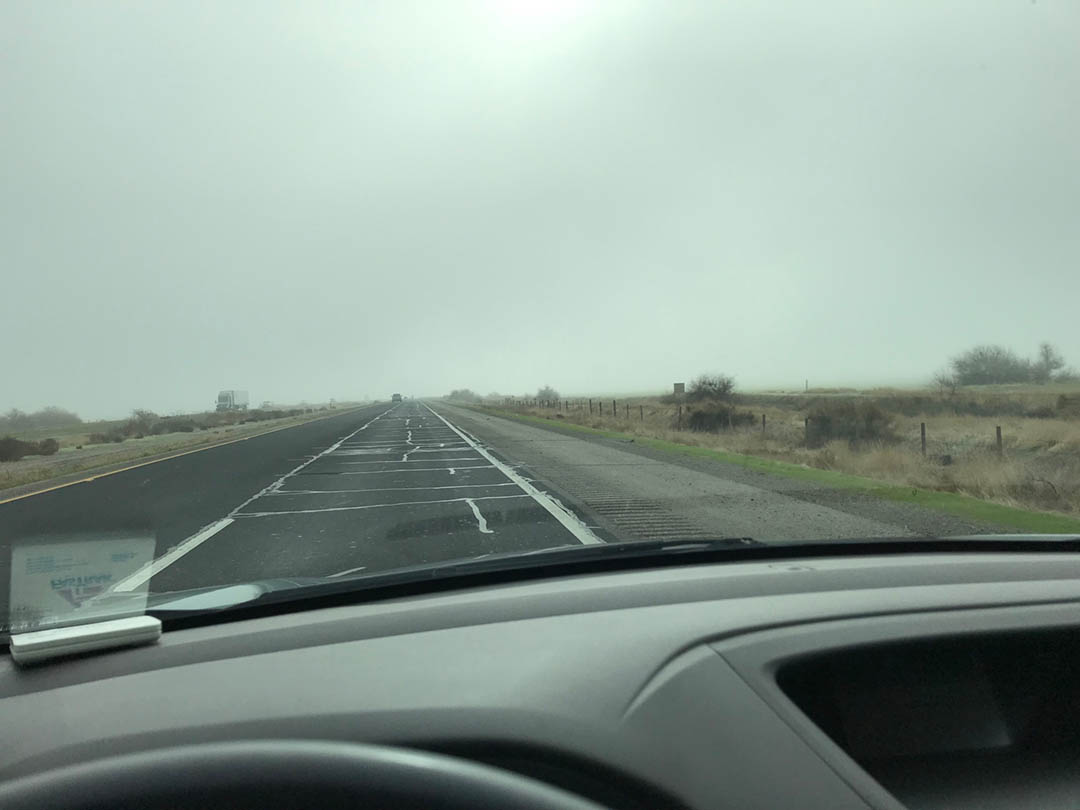
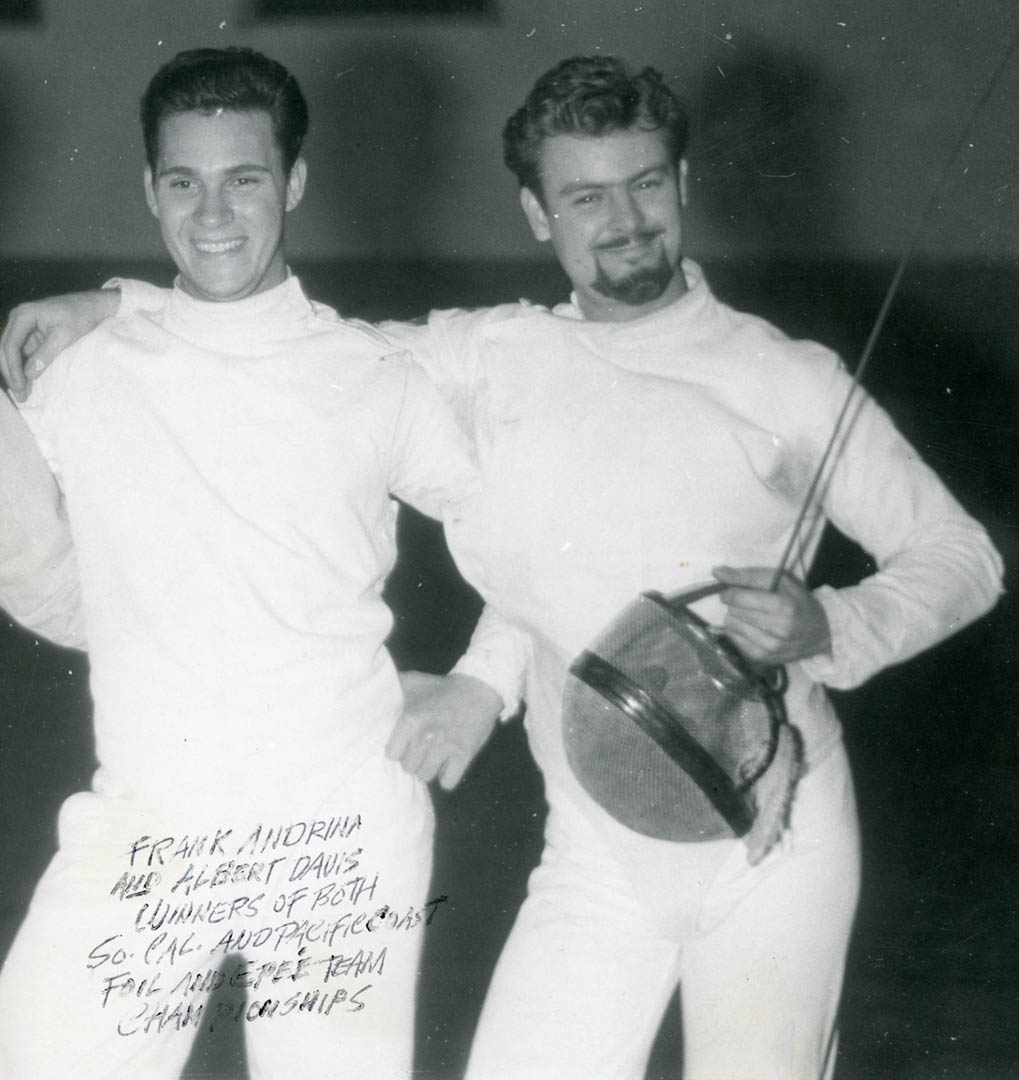
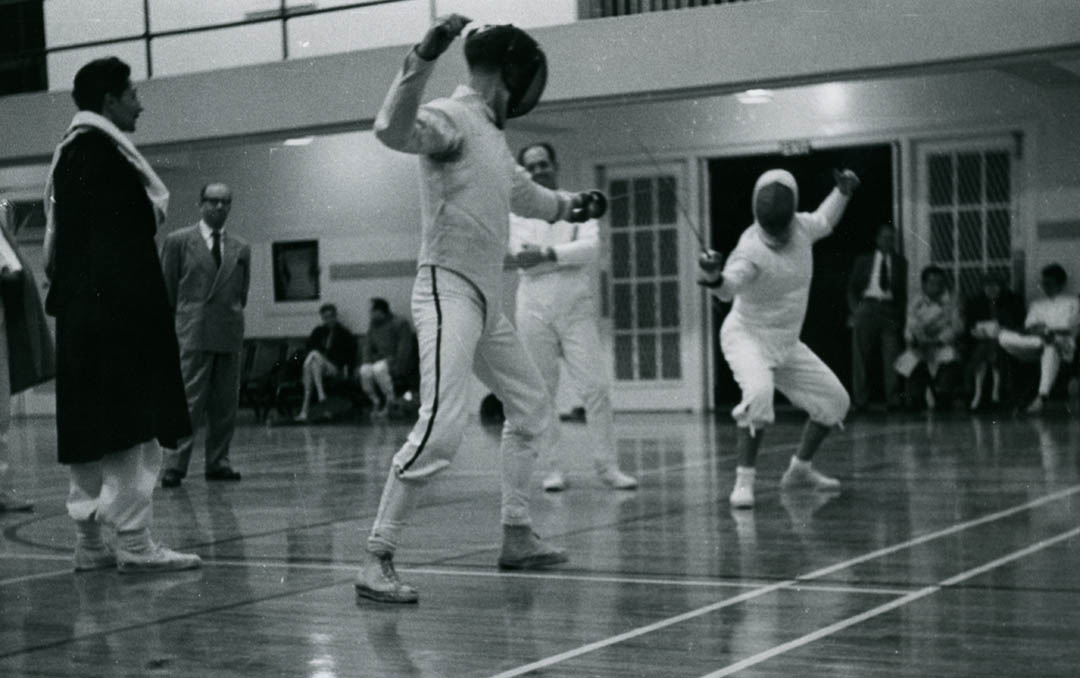
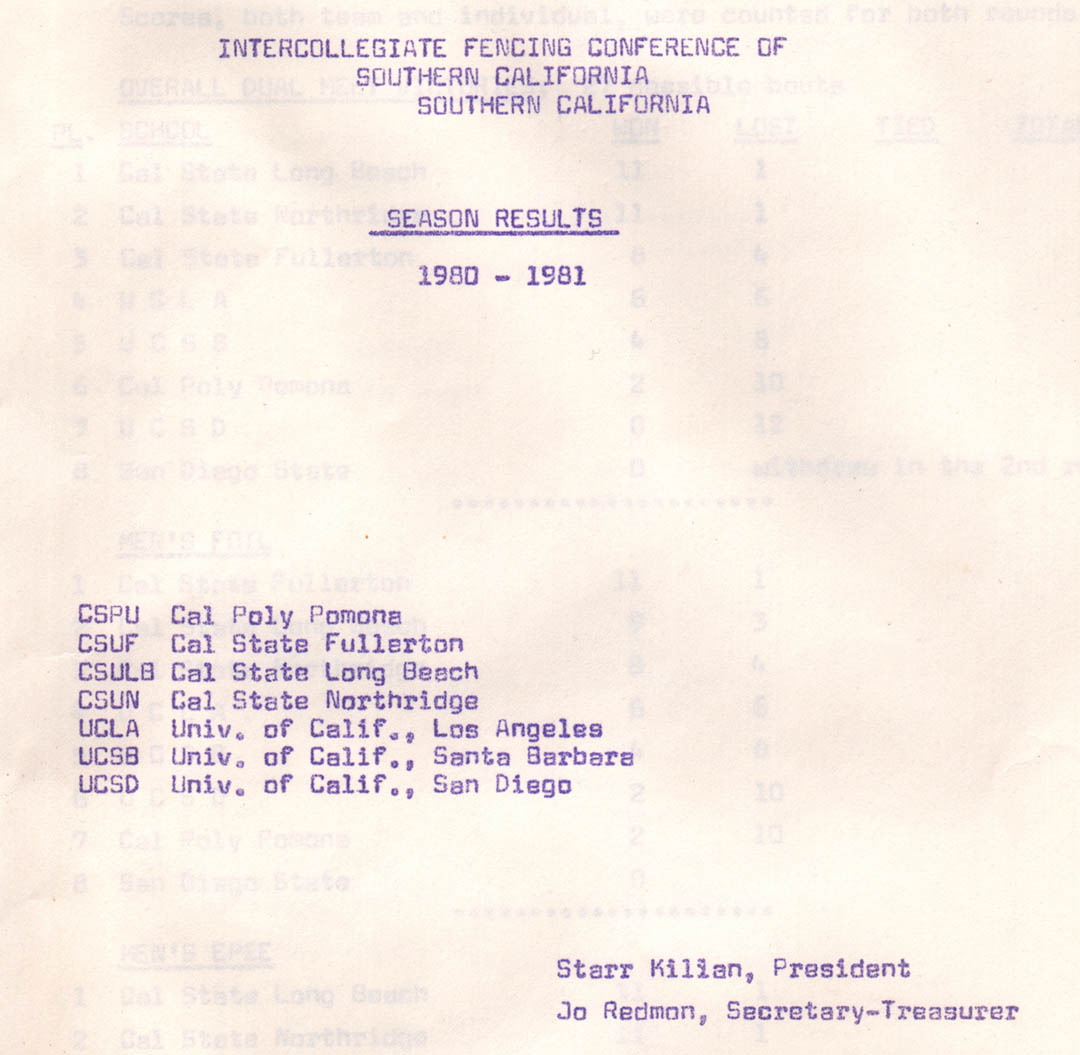
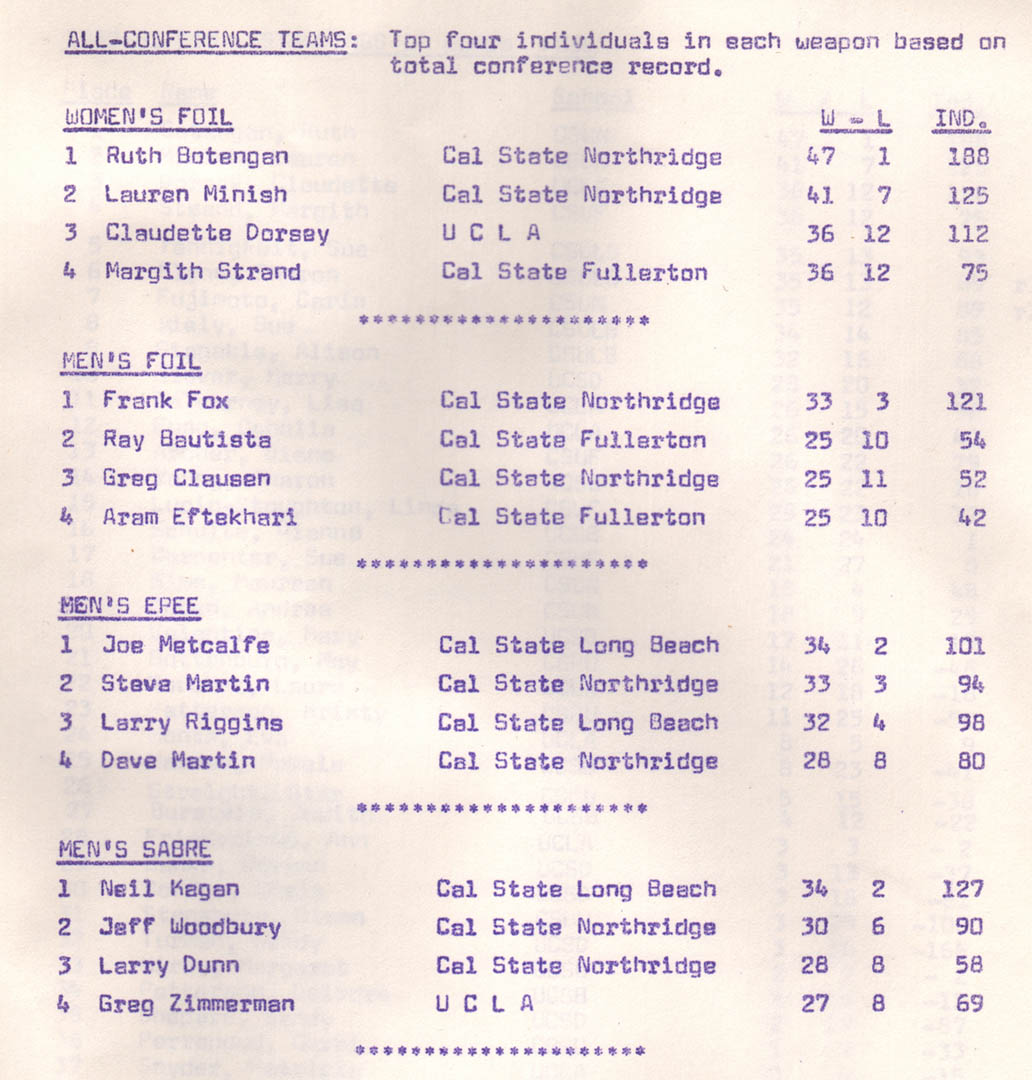
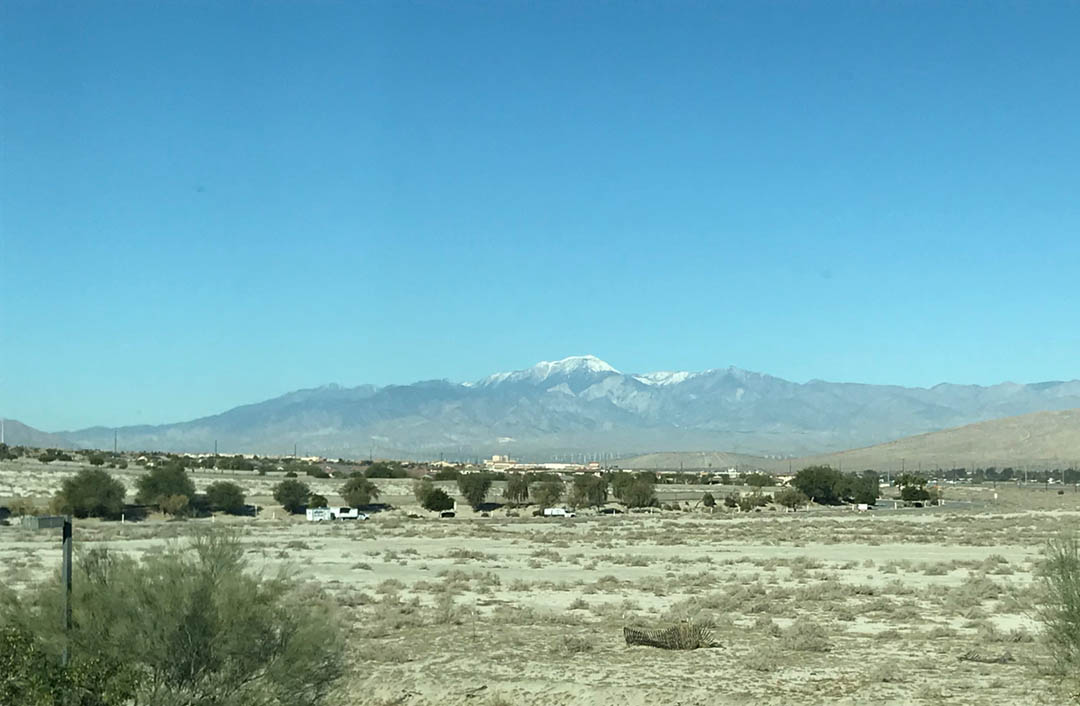
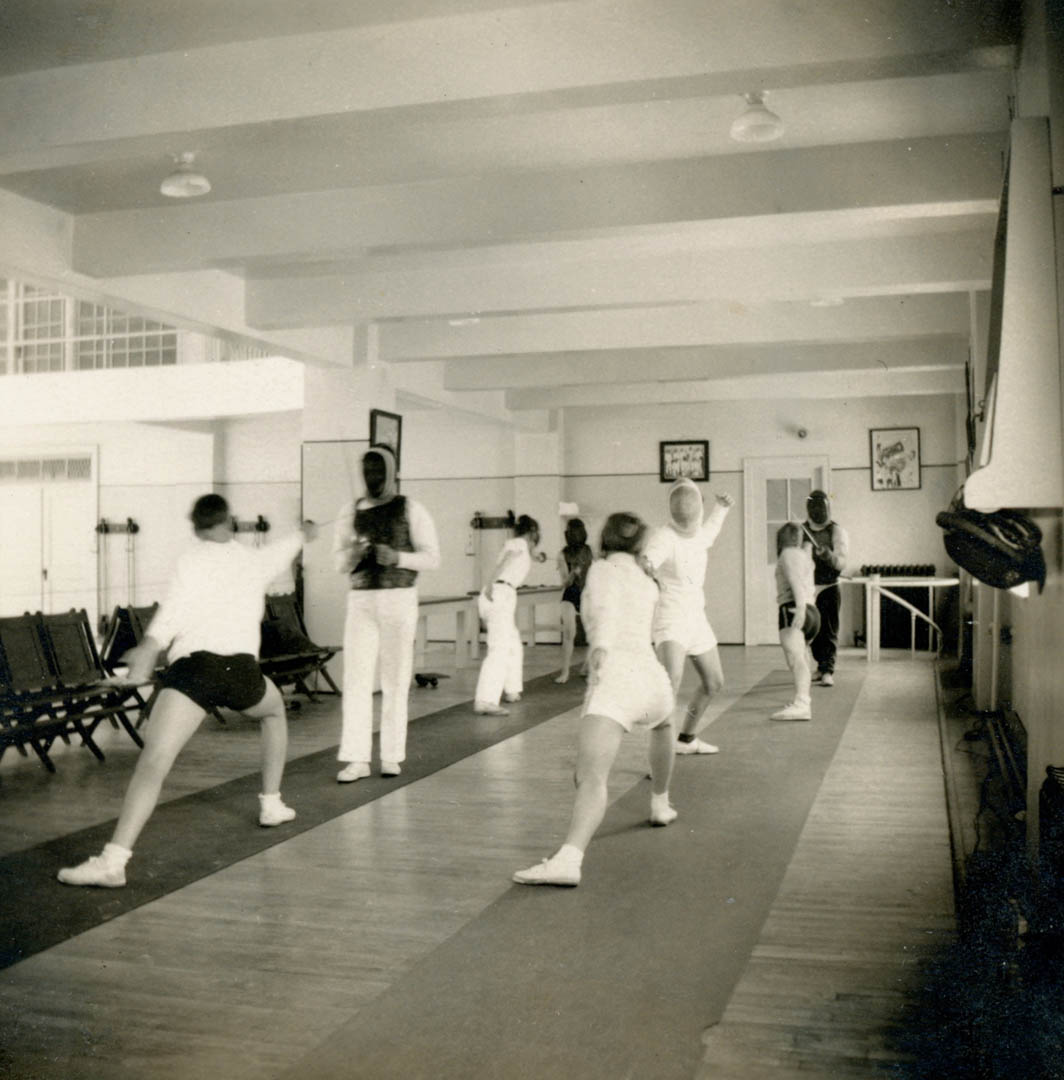
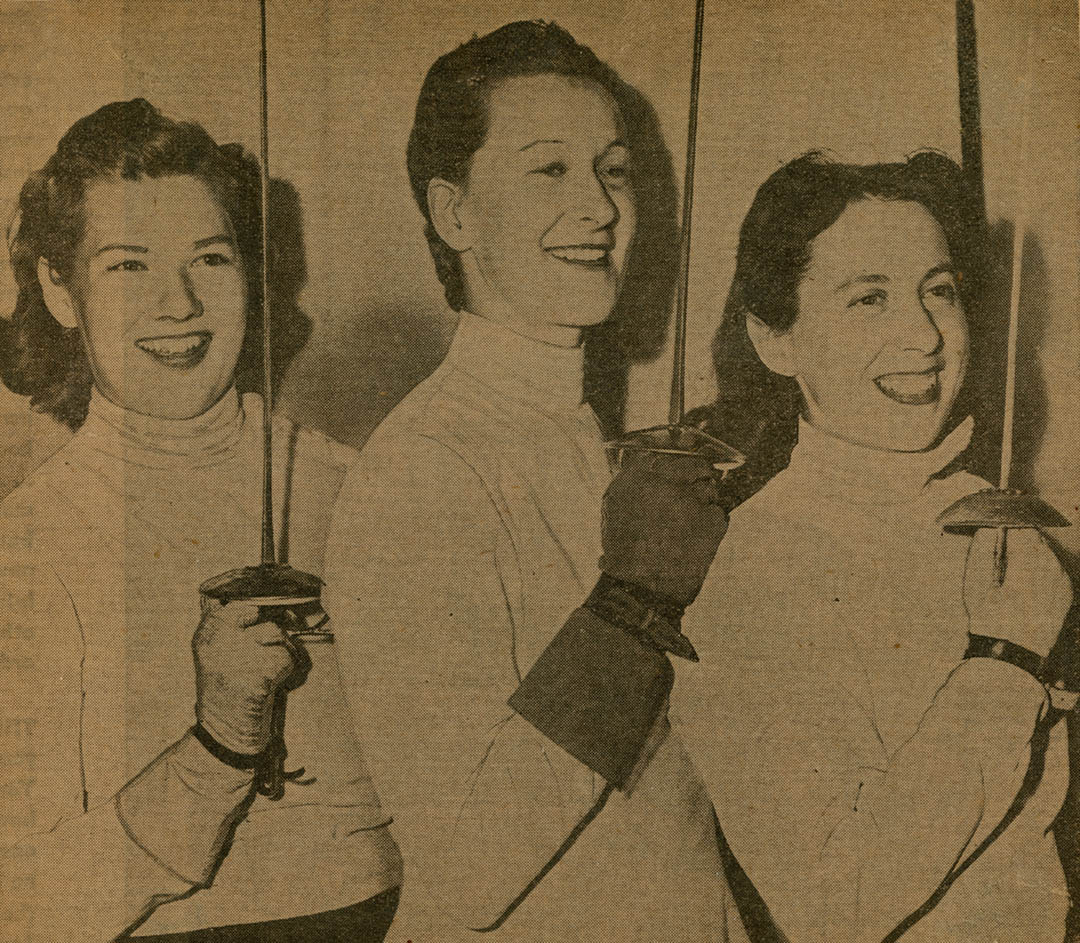
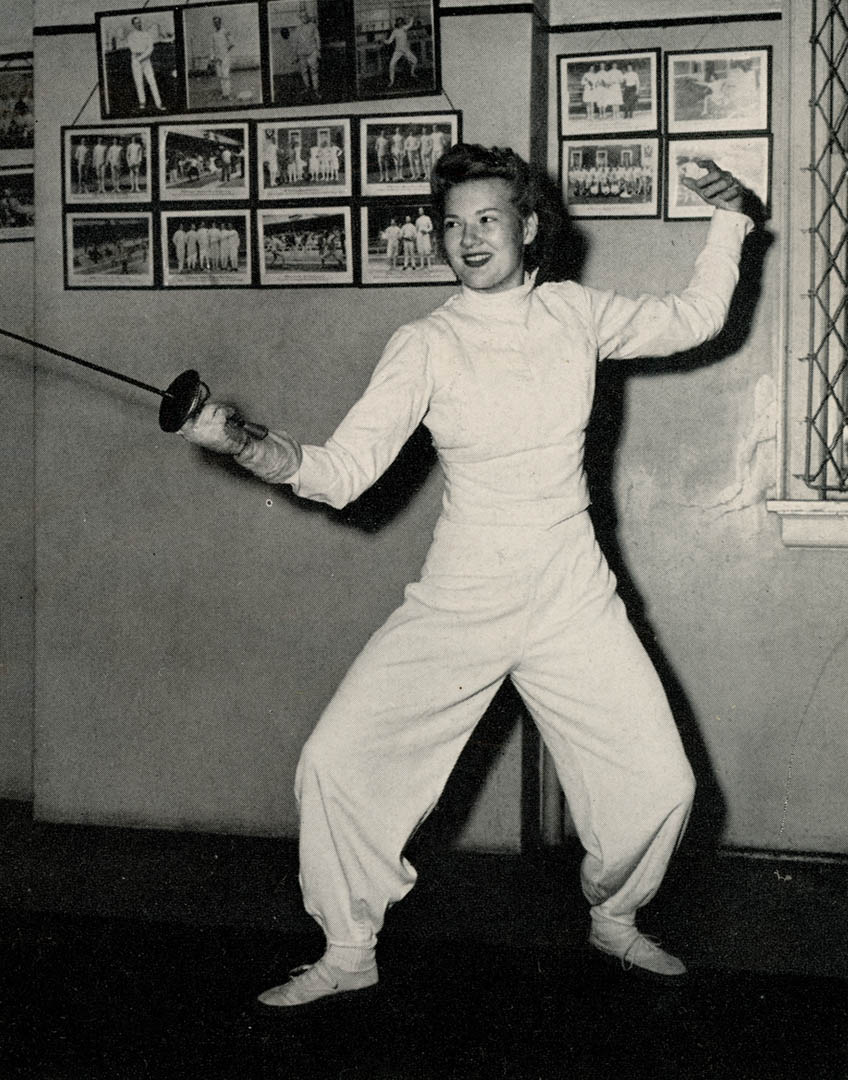
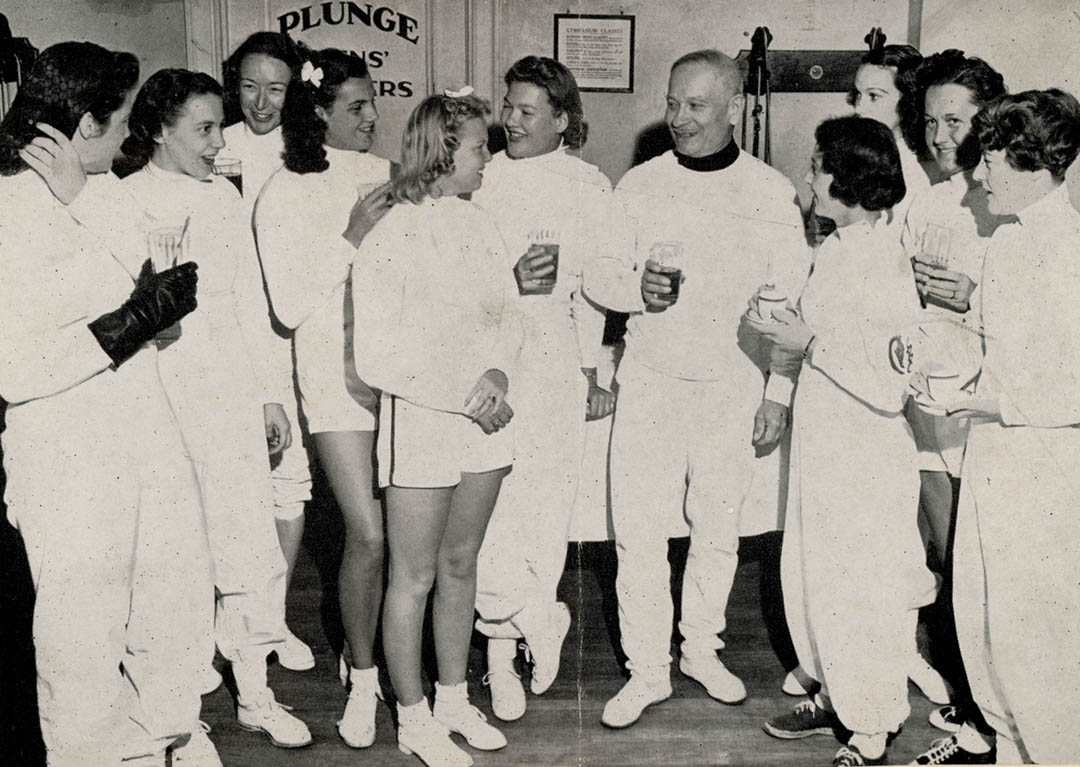
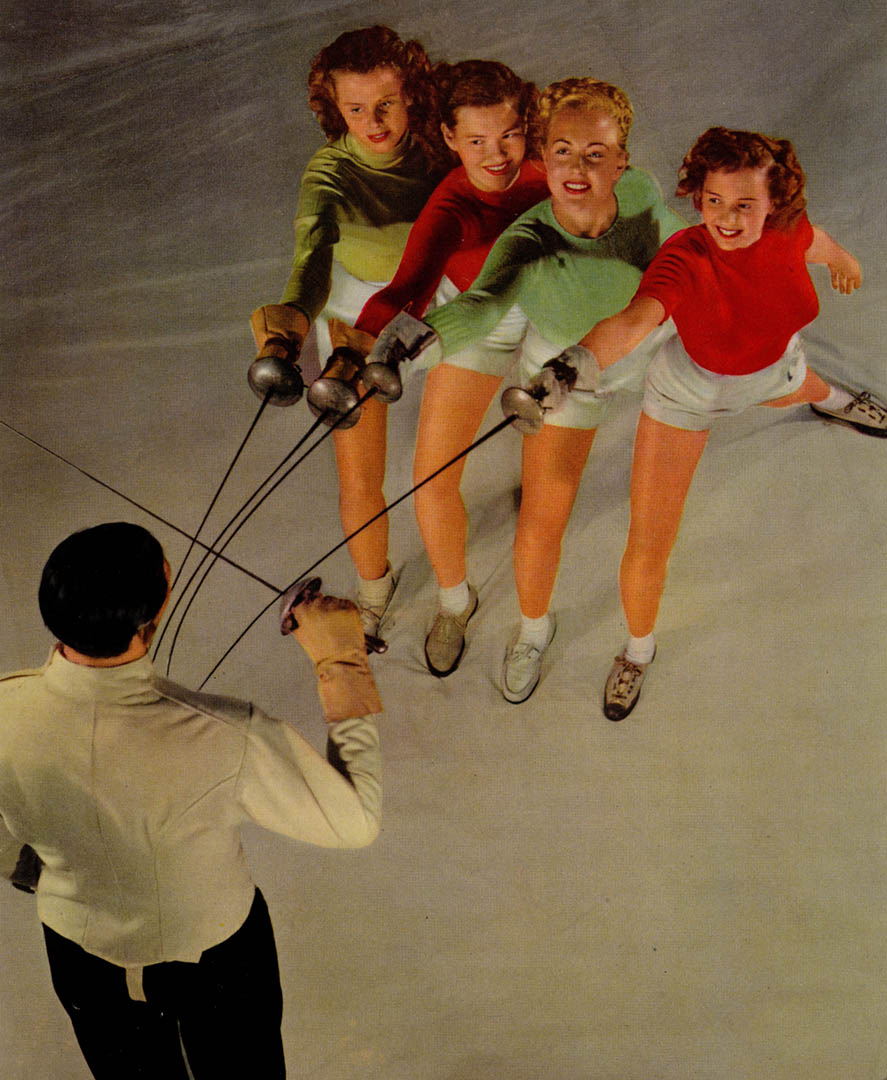
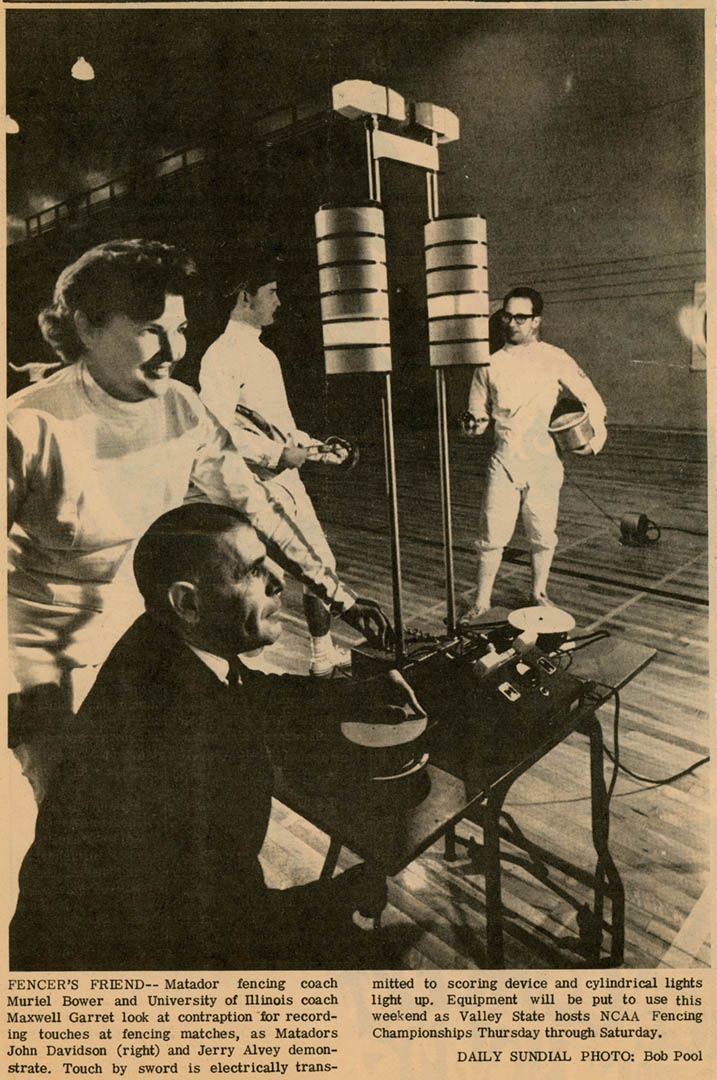
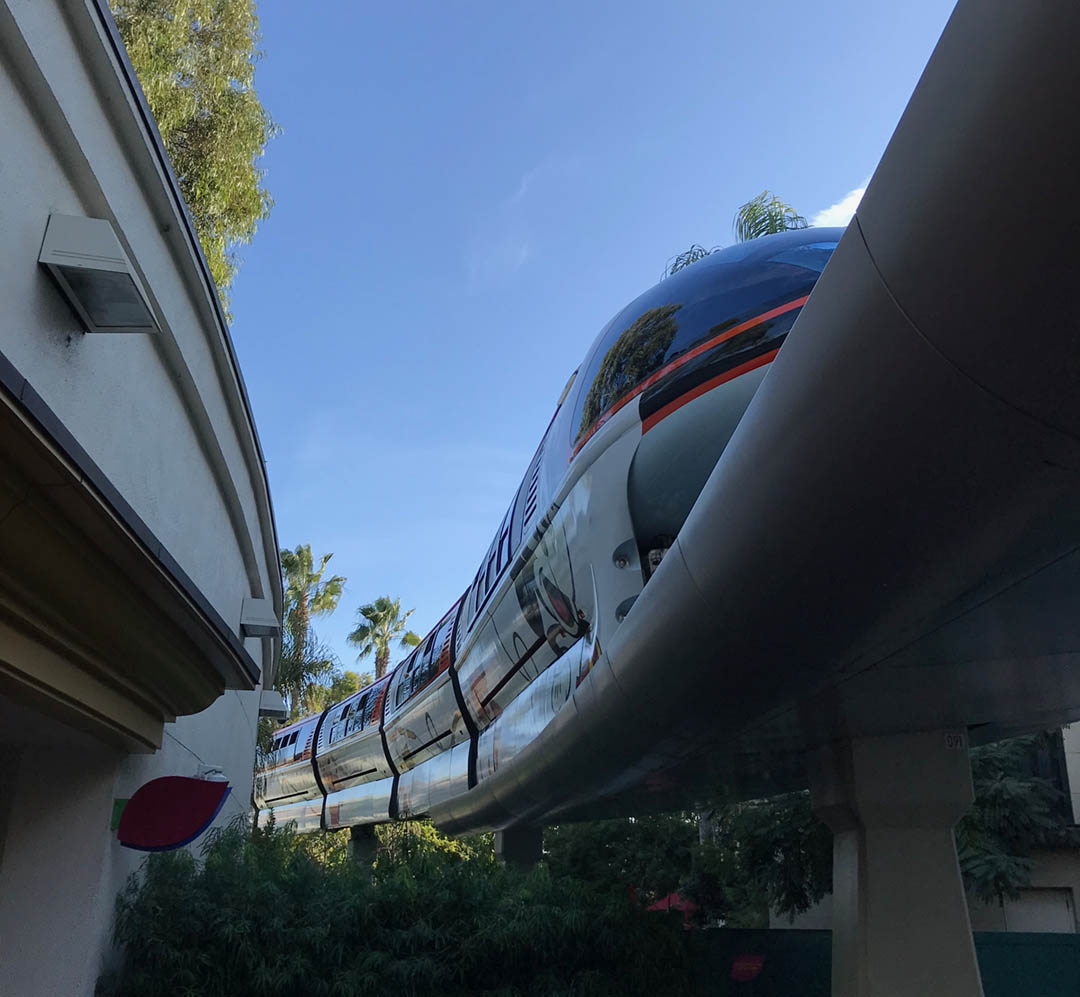
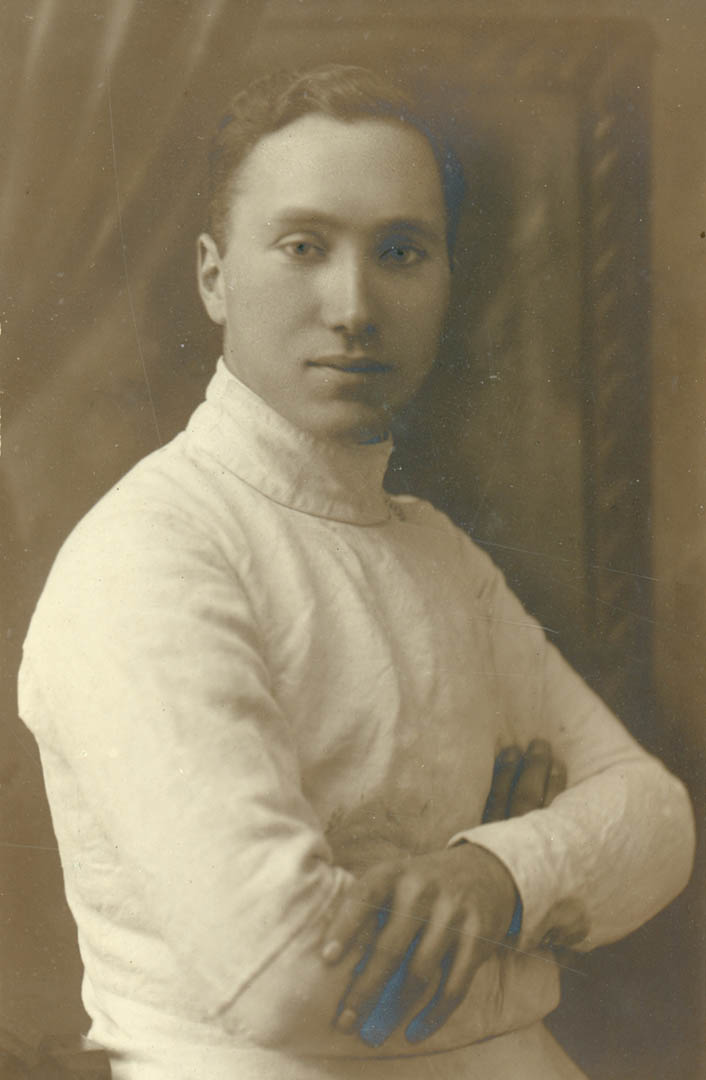
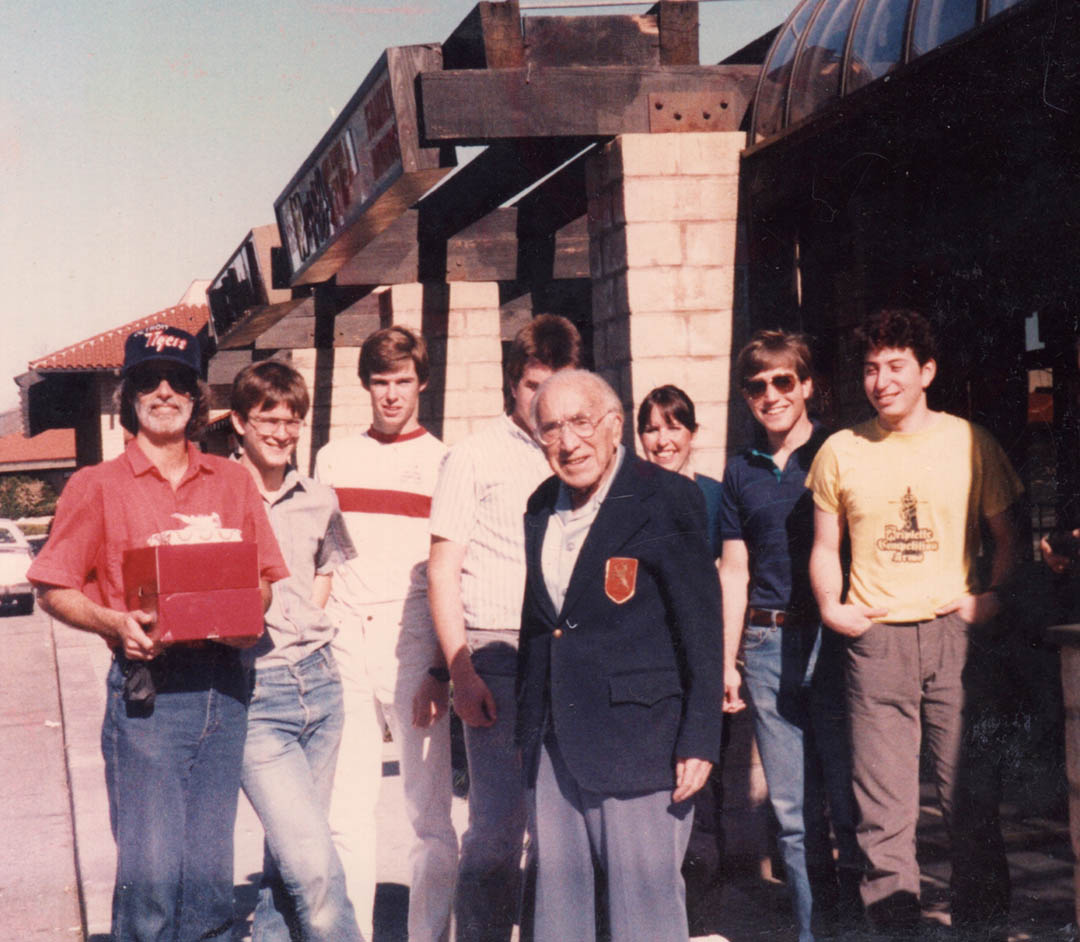
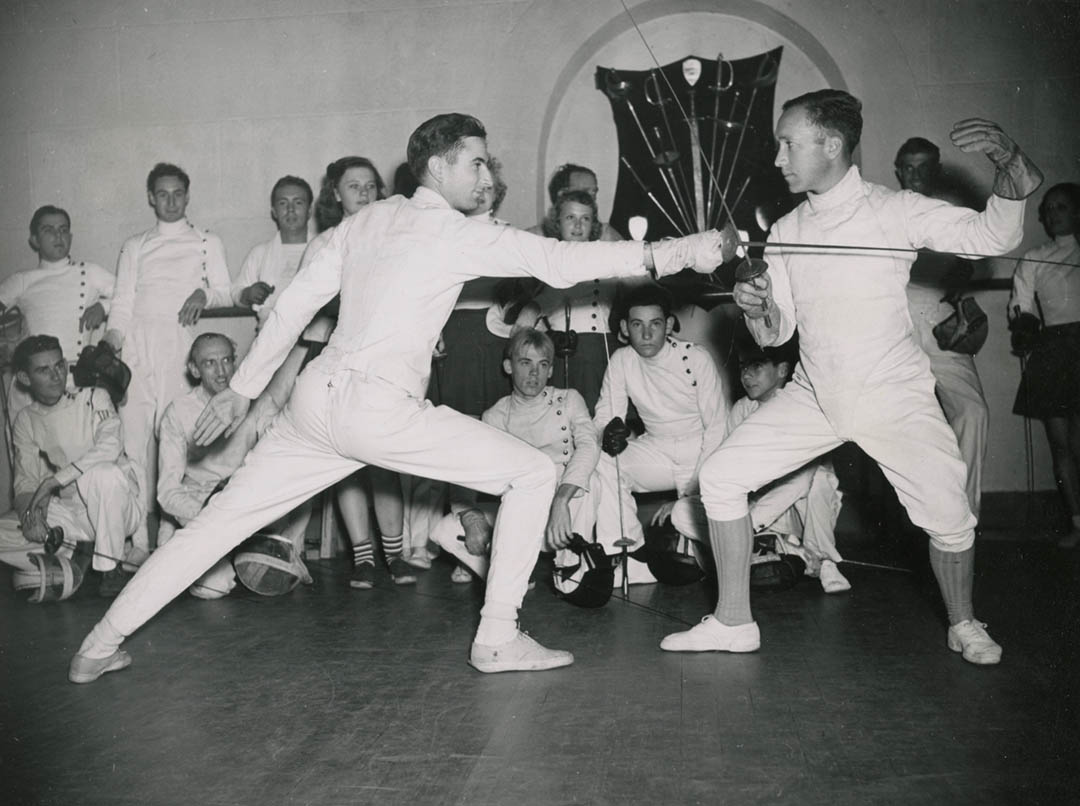
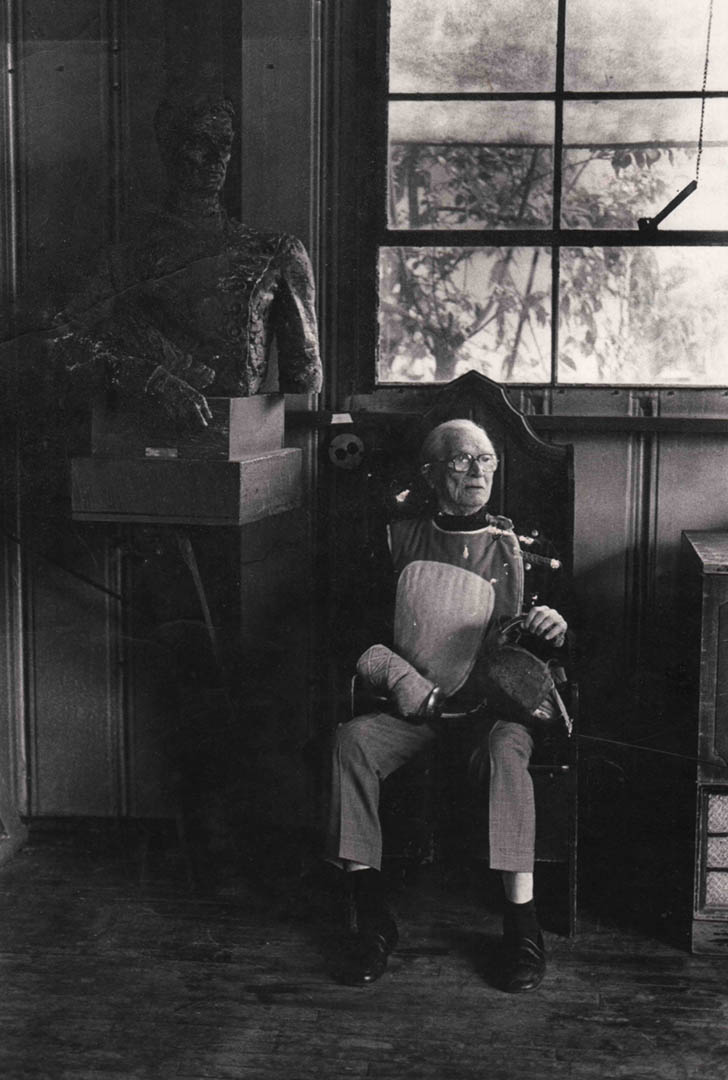
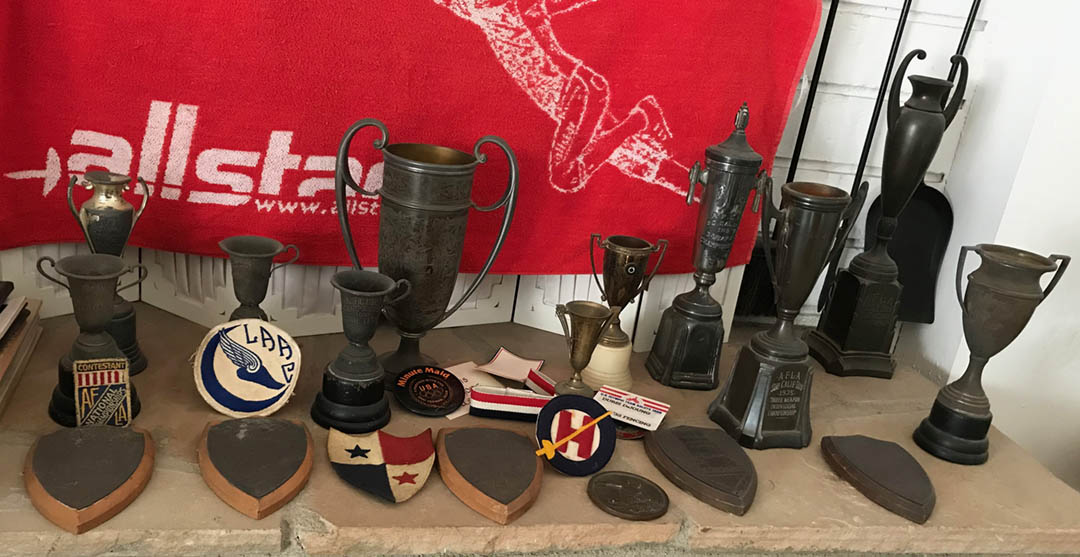

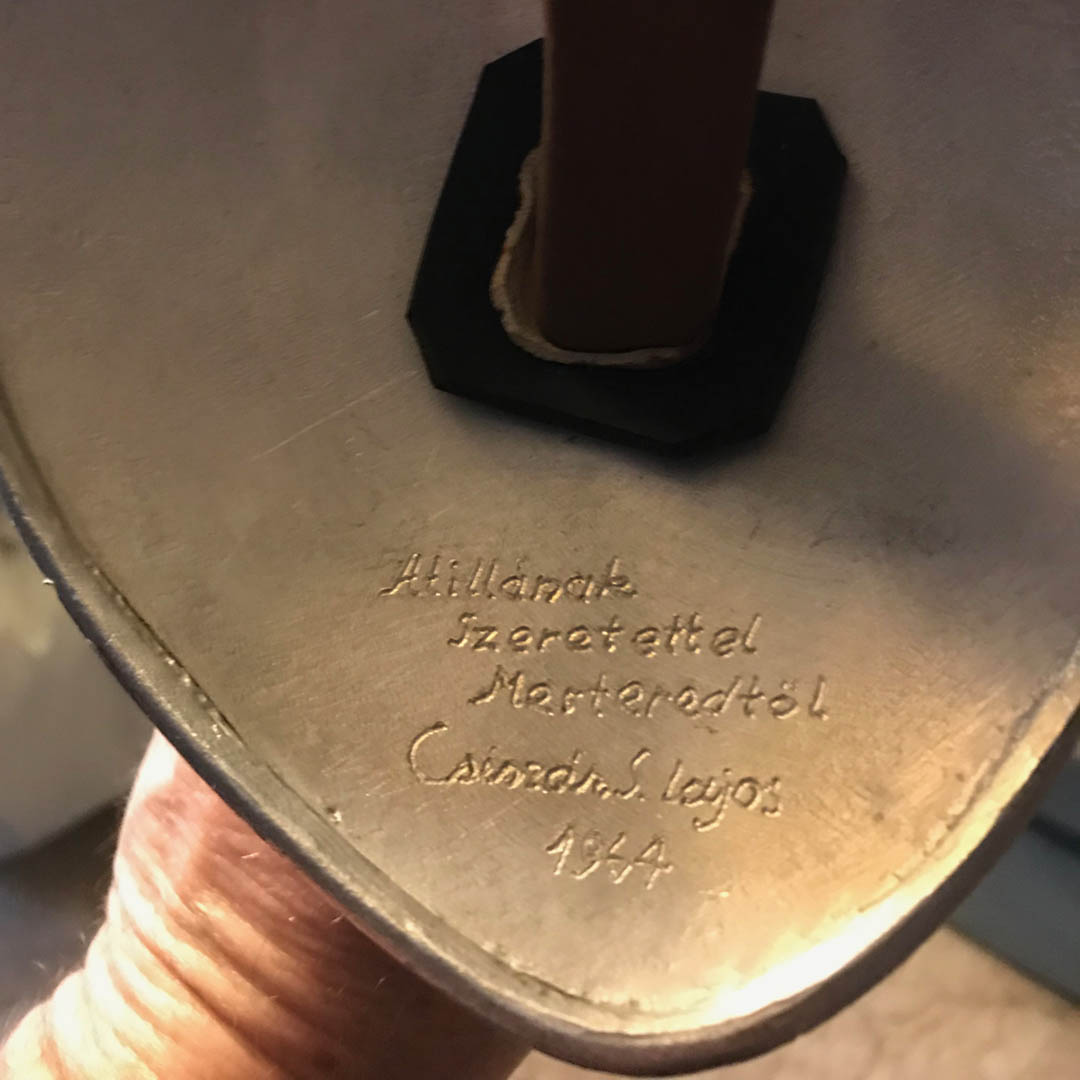
Great story! I hope you have your hard drives backed up at a remote location!